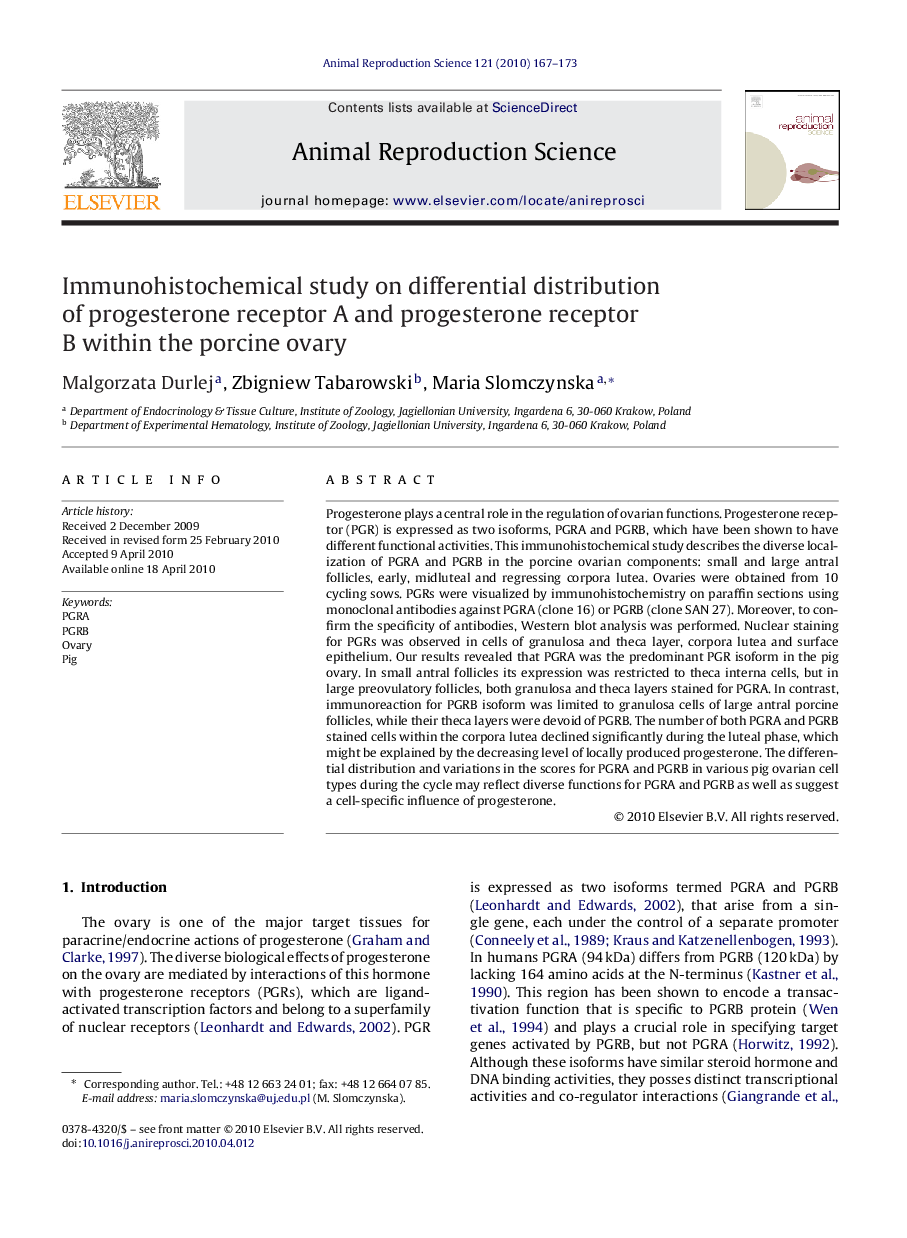| Article ID | Journal | Published Year | Pages | File Type |
|---|---|---|---|---|
| 2073689 | Animal Reproduction Science | 2010 | 7 Pages |
Progesterone plays a central role in the regulation of ovarian functions. Progesterone receptor (PGR) is expressed as two isoforms, PGRA and PGRB, which have been shown to have different functional activities. This immunohistochemical study describes the diverse localization of PGRA and PGRB in the porcine ovarian components: small and large antral follicles, early, midluteal and regressing corpora lutea. Ovaries were obtained from 10 cycling sows. PGRs were visualized by immunohistochemistry on paraffin sections using monoclonal antibodies against PGRA (clone 16) or PGRB (clone SAN 27). Moreover, to confirm the specificity of antibodies, Western blot analysis was performed. Nuclear staining for PGRs was observed in cells of granulosa and theca layer, corpora lutea and surface epithelium. Our results revealed that PGRA was the predominant PGR isoform in the pig ovary. In small antral follicles its expression was restricted to theca interna cells, but in large preovulatory follicles, both granulosa and theca layers stained for PGRA. In contrast, immunoreaction for PGRB isoform was limited to granulosa cells of large antral porcine follicles, while their theca layers were devoid of PGRB. The number of both PGRA and PGRB stained cells within the corpora lutea declined significantly during the luteal phase, which might be explained by the decreasing level of locally produced progesterone. The differential distribution and variations in the scores for PGRA and PGRB in various pig ovarian cell types during the cycle may reflect diverse functions for PGRA and PGRB as well as suggest a cell-specific influence of progesterone.
